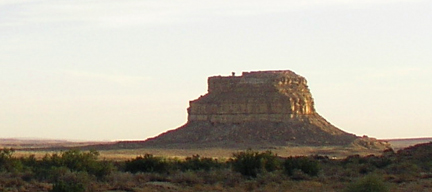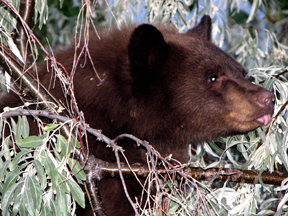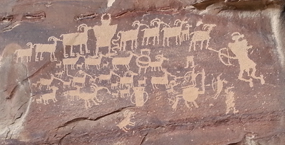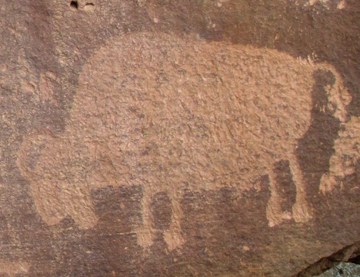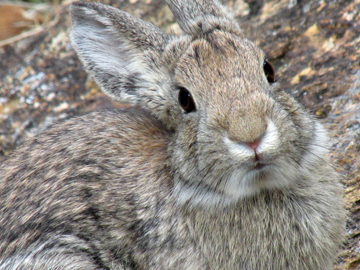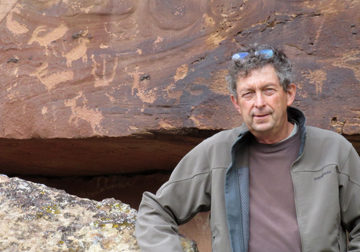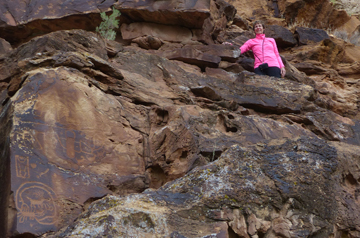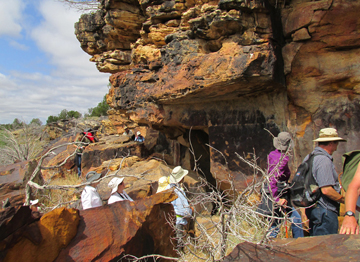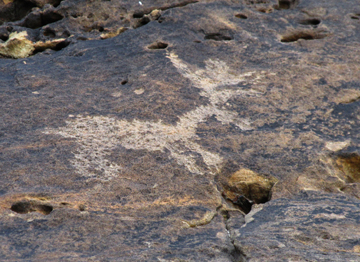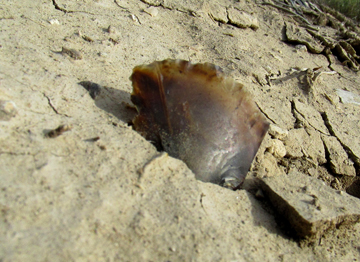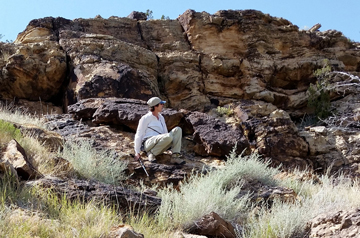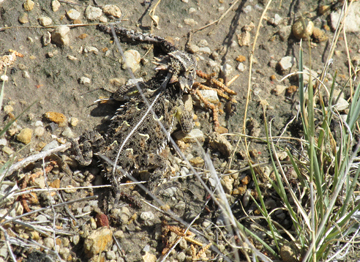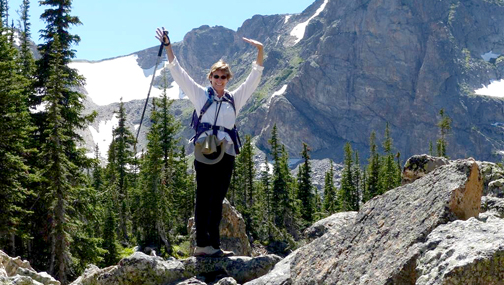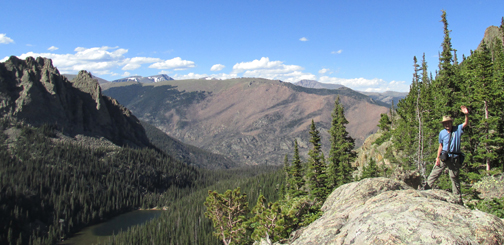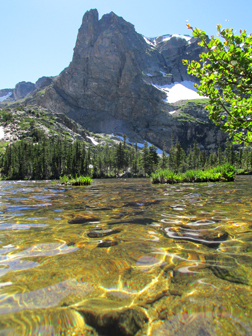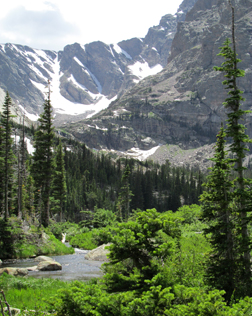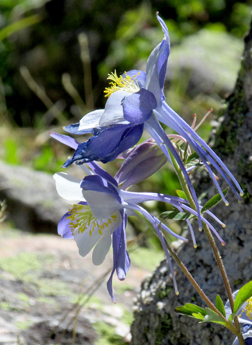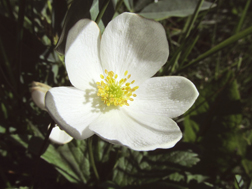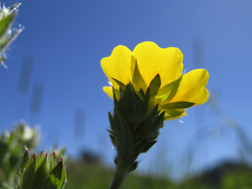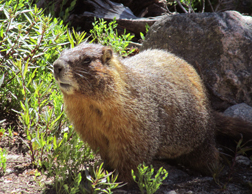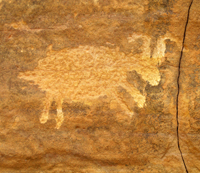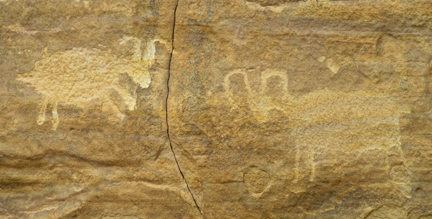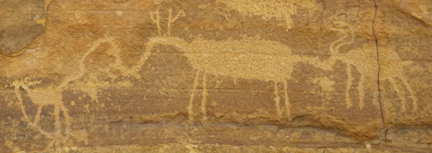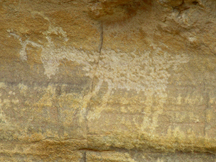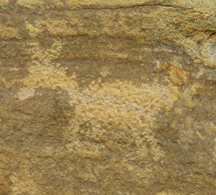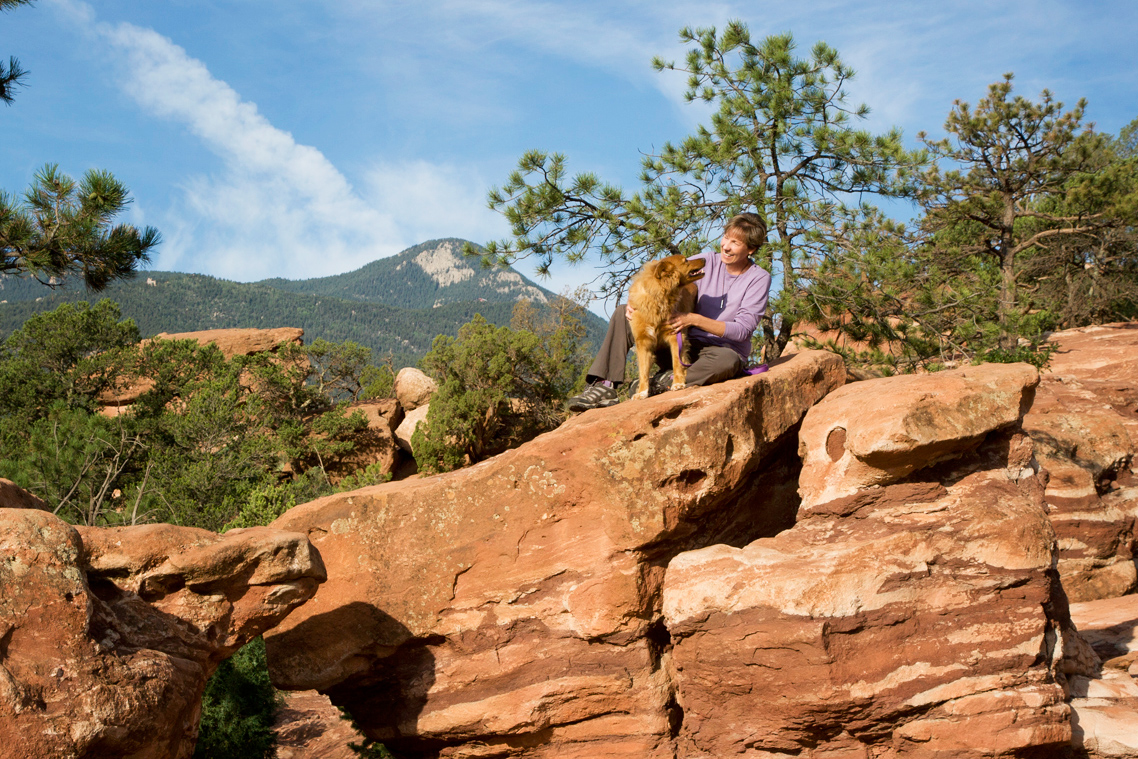Test your “sun and seasons” vocabulary: Perihelion, equinox, apogee, zenith, and more
Prehistoric people in the Southwest carefully watched – and marked – the sun and seasons.
Here’s a great example: On summer solstice at Fajada Butte (in Chaco Culture National Historical Park), a vertical shaft of light – now known as the sun dagger – passes through the center of a spiral petroglyph.
This was no accident. For prehistoric people, tracking the movement of the sun was serious business. For example, the vernal equinox might indicate that it’s time to plant seeds.
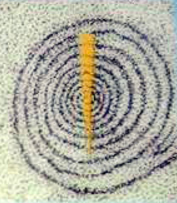
Diagram of sun dagger (shaft of light) and spiral petroglyph by NPS (public domain)
Like our ancestors, I tend to pay attention to the movement of the sun and changing of the seasons.
While searching for information on the upcoming vernal equinox, I ran across this sentence on the website TimeAndDate.com:
“The Earth is closest to the Sun – at its perihelion – about 2 weeks after the December solstice and farthest from the Sun – at its aphelion – about 2 weeks after the June solstice.”
Huh?
As a copywriter, I love the English language, and I love learning new words.
The above sentence kicked up my curiosity a notch, so I took a few minutes to expand my vocabulary.
Here’s a quick “sun and seasons” vocabulary test. See how well you do!
Vernal equinox and autumnal equinox – Also known as spring equinox and fall equinox, this marks the moment the Sun crosses the celestial equator (the imaginary line in the sky above the Earth’s equator). According to TimeAndDate.com, on the equinox, night and day are nearly the same length (12 hours) – but not exactly the same length. The word “equinox” is derived from Latin, meaning “equal night.” The equinox happens every year on March 19, 20, or 21 and on September 22, 23, or 24.
Winter solstice and summer solstice – In the Northern Hemisphere, winter solstice is the shortest day of the year (in terms of sunlight). Conversely, summer solstice is the longest day of the year. Winter solstice occurs on December 20, 21, 22, or 23. Summer solstice occurs on June 20, 21, or 22. According to TimeAndDate.com, the dates vary because our 365-day calendar year is slightly different than the tropical year – the length of time the sun takes to return to the same position in the seasons cycle (as seen from Earth).

TAKE NOTE: You can sprinkle these words into your everyday language. Per Dictionary.com:
– Zenith: “a highest point or state; culmination.”
– Nadir: “the lowest point; point of greatest adversity or despair.”
Zenith and nadir – Pretend you’re standing on the equator at high noon. Directly above you, the sun reaches its zenith – its highest point. Beneath your feet is the nadir, which is diametrically opposite of zenith.
Perihelion and aphelion – According to TimeAndDate.com, when the Earth is closest to the Sun, this is called the perihelion point. This occurs about 2 weeks after winter solstice. Conversely, when the Earth is farthest away from the Sun, this is called the aphelion point. This occurs about 2 weeks after summer solstice. This year’s aphelion is July 3, and the Sun will be 94,505,901 miles away.
Perigee and apogee – TimeAndDate.com explains that, like the Earth’s orbit around the Sun, the Moon’s path around the Earth is also elliptical. The point in the Moon’s orbit that is closest to the Earth is called the perigee and the point farthest from the Earth is known as the apogee. The terms are also sometimes used interchangeably with the Earth’s perihelion and aphelion.
Productivity tips for small business owners: These 7 calendaring tips add productivity (and sanity) to your week
Is every week crazy-busy?
How can you add productivity – and sanity – to your week?
There’s an old saying that goes (roughly): “Sometimes you get the bear; sometimes the bear gets you.” When you’re crazy-busy, it can feel like you’re being chased by a bear – and it’s gonna get you! Often, feeling crazy-busy goes hand-in-hand with feeling stressed.
After a 25-year corporate marketing career and 10+ years owning a business, I’ve discovered that being organized goes a long way toward reducing stress and being productive. Today, as a marketing/branding consultant and copywriter for websites, blog posts, speaker one-sheets and more, I have a lot of plates spinning.
Taking time for “calendaring” helps to ensure my week is sane, organized, and productive. Calendaring helps to ensure you never miss a meeting and always complete projects on time. That’s why calendaring is one of my favorite productivity tips for small business owners.
If you spend time wading through emails and stacks of paper searching for details, are late for meetings, and stress over deadlines, then I encourage you to give these calendaring tips a try. Wouldn’t it be great to get on top of details and deadlines? Wouldn’t it be great to get the bear?
Let’s follow the “Who/What/When/Where” approach to discuss this productivity topic.
WHO: Every busy person including solopreneurs and small business owners who could add a bit of productivity (and sanity) to their lives. In fact, calendaring is one of my favorite productivity tips for small business owners, because it make a big difference in your quality of life.
WHAT: Take time for calendering every week. To me, it means carving out time to sit down, take a breath, and create a complete to-do list for the upcoming week. This starts with organizing all events in your calendar (whether it’s paper or electronic). Mark down all appointments, note all project deadlines, list priority action items, and so forth.
WHEN: I reserve time every Monday morning to organize my week. It can take a couple of hours! Do your Mondays start with “ready, set, go”? If so, consider taking time for calendaring on Friday afternoon for the upcoming week. If necessary, do this over the weekend.
WHERE: This activity requires focus – and having information and office tools at hand. I encourage you to do your calendaring at your desk in your office. That way, you have all tools handy: your phone, computer, email, electronic or paper calendar, pens, highlighters, etc.
HOW: When it comes to calendaring, here are my favorite productivity tips for small business owners:
- Create ONE list for the whole week; identify daily action items and milestones – Take time to create a complete to-do list for the upcoming week (either on paper or electronically). This includes identifying tasks and projects you MUST complete as well as those you HOPE to complete. Calendaring takes this a step beyond jotting down a simple to-do list. Whether your calendar is electronic or paper, take time to identify action items to tackle on specific days. Believe me, when you create a thorough, day-by-day action list that’s integrated with your calendar, all sorts of details will pop into your brain … important details that may otherwise get overlooked. Plus, there’s a good chance you’ll step up your productivity.
- Schedule “meetings” with yourself – Do you have a long-term project on your plate? Often, business development activities and long-term goals that are important do not have concrete or looming deadlines. Set aside time to get it done! Put this appointment in your calendar, and don’t skip it. A good example is dedicating a portion of every Monday to be “Marketing Monday” to promote and grow your business.
- At the end of every day, take time to wrangle loose ends – Write down all appointments, tasks, notes, reminders, and deadlines for the next day. Capture all details. Otherwise, these “gremlins” may wake you up at 2:00 in the morning.
- Include personal tasks on your master list – Let’s say your anniversary is next week, and you need to call in reservations at your favorite restaurant. Better make a note. Or perhaps you’re hosting a friend’s birthday party at your house. Don’t forget to order the cake. When calendaring, include important action items related to personal projects.
- This is a good opportunity to clear off your desk – While calendaring, take time to file papers, address sticky notes, and check unread emails for surprise action items.
- Send a reminder/confirmation email to meeting participants – For meetings that have been set up for the week (either in-person meetings or conference calls), send a reminder email to the participants. This helps to ensure the meeting happens as planned, and the project moves forward.
- Set alarms in your smartphone – You can set up alarms to alert you to certain high-priority activities such as meetings and doctor’s appointments. (Don’t go overboard.)
WHY: Carving out time to get organized actually buys you more time! Taking time for calendaring helps to clear your mind, reduce stress, and tackle priority projects. Without question, it makes you more productive. And you’ll be on top of details and deadlines!
Imagine no more searching for lost files, being late for important meetings, or missing project deadlines. Investing just a bit of calendaring time every week can truly add productivity – and sanity – to your work week.
This is why calendaring has become one of my favorite productivity tips for small business owners.
Nine Mile Canyon: “The world’s longest art museum”
When Mike and I head out for a roadtrip, we usually point the car southwest. This time, we drove due west to an extremely remote section of Utah called Nine Mile Canyon. In reality, this canyon is 46 miles long. It has been dubbed “the world’s longest art museum,” thanks to many panels of historic and prehistoric rock art (petroglyphs and pictographs). Click to see a map.
Here is the gem of Nine Mile Canyon: A petroglyph panel known as “The Great Hunt”
According to signage at the site: “Scholars believe this extraordinary panel may represent an actual hunting event. … Historians believe this panel depicts a scene in late November or early December when herds of bighorn sheep meet for the fall mating season. This is the only time of the year that rams, ewes, and lambs are all together in the same place. The large trapezoidal horned figure at the top of the [petroglyph] panel is an example of a classic Fremont [culture] rock art style … circa AD 950-1200.”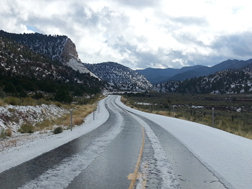
Utah’s squirrely weather didn’t put a damper on our fun…
Although the weather in Colorado can be unpredictable, it seems like Utah takes the cake.
- At the entrance of Nine Mile Canyon, we encounter several inches of hail on the road. (It looks like snow in the picture, but it is hail.)

- Then the sun comes out – hallelujah! We can take time to explore, climb on the cliffs, and take tons of pix.
- Soon dark clouds roll in.

- Then the sky pelts us with rain, sleet, and snow. In just a matter of minutes, we’re walking in a winter wonderland.
- Mother Nature has one more BIG thing to throw our way: A huge boulder rolls into the middle of the road. (It was not there when we entered the canyon!)

Here’s a sampling of what you can discover in Nine Mile Canyon
Note the variety of rock art styles and images including a horse and rider (wearing a headdress), which dates to historic times. Keep in mind that the Spanish brought horses to America, so this type of image helps to date certain petroglyph panels. Other images are undoubtably prehistoric.
All photos by Patrice Rhoades-Baum, except the shot of me exploring the cliff (on the hunt for more rock art), taken by Michael Baum.


Writing marketing content: 3 secrets to make it flow

Business owners who are writing marketing content – website copy, sales landing pages, brochures, speaker one-sheets, and other marketing verbiage – tell me it’s a chore.
They procrastinate, get stressed out, get writer’s block, and suffer through the first draft. Their editing process is more “critical” than “critique.” The words do not flow, and they are NOT having a good time.
For me, thanks to 3 decades of marketing and copywriting experience, writing marketing content comes fairly easily. It’s still a hefty project, mind you. But (thankfully) there’s not a lot of pain and suffering involved.
Right now, I’m immersed in writing several sales landing pages. The copy is flowing (thankfully). I just realized the reason why it’s flowing: Over the years, I’ve internalized these 3 secrets to writing marketing content.
Here are my 3 secrets to writing marketing content:
Secret #1. Follow the “itch-and-scratch” approach.
This is an extremely useful tool to have in your writing toolkit. Here’s how it works:
THE ITCH: Write the first few sentences of copy to directly address your prospects’ needs, challenges, or struggles.
THE SCRATCH: Write copy that directly speaks to the results – the relief they get – with the products or services you deliver.
Here’s an example:
THE ITCH: Are you embarrassed by your outdated website and mismatched marketing tools?
THE SCRATCH: Team with our skilled designers to create polished, professional marketing collateral, including a strategic website. You’ll enjoy this exciting, stress-free process. And you’ll love the results!
Secret #2. Use the word YOU.
Writing sentences that start with the word “YOU” helps to clearly present benefit messages. This is a must when writing ALL types of marketing content including website copy. (Note that you are “speaking” to an individual person, not a group of people magically reading your content in unison.)
Here’s an example:
In this interactive workshop, your sales reps will learn a proven process to hit their sales goals, month after month.
“YOU” is a hardworking little word. It practically guarantees that your marketing content clearly presents “what you get” – the benefits and results your prospects will receive when they team with you.
Secret #3. Tap into the reader’s emotions.
As I thought about one of the sales landing pages I was about to write, I realized that prospects who need this product are feeling confused, stuck, and overwhelmed. As I wrote the copy, I addressed these feelings from beginning to end. Essentially, I kept my finger on the pulse.
When writing marketing content, take a minute to think deeply about your potential buyers. How are they feeling? What are the emotions they struggle with – the emotions that might drive them to purchase the particular service or product you are selling?
Here’s a helpful list of emotions, as a start:
Frustrated, overwhelmed, confused, unclear/foggy, feeling stuck, feeling pressured to make the right choice, scared, feelings of inadequacy, flustered, floundering, fear of wasting time, fear of wasting money, fear of failure, fear of making the wrong choice
Follow these 3 secrets to writing marketing content for your next project. Hopefully, there will be no pain and suffering – and a lot more flow!
Take this Quick Quiz: Does your website content focus on your business – or on your reader?
A colleague asked for feedback on a web page she wrote for a business in the healthcare industry. It was well written, and her main point was clear. However, the content focused on the business, not the reader. In 6 paragraphs, the words we and our appeared 18 times. The words you and your were few and far between.
Why was this an issue? Because the content stressed “Here’s what we do.” The benefit messages – “Here’s what you get” – simply were not clear.
The reader would need to puzzle out: “This business says it offers X. Now I must determine if that will provide the benefits or results I’m looking for.” This may not seem too difficult, but guess what? Most likely, the reader will not take time to connect the dots.
In website content and other marketing copy, you must clearly spell out the benefits and results the reader (your prospect) will receive from your products or services.
I encouraged my colleague to shift her content from “WE-focused” to “YOU-focused.” For example:
- WE-focused: As a Level II trauma center, we provide specialized care, and we can handle any emergency.
- Rewritten to be YOU-focused: In an emergency, you can rely on the specialized care of our Level II trauma center. (Notice that the content speaks directly to the reader.)
Here’s another example, commonly found on the “About Us” page on a business website:
- WE-focused: We have provided reliable, award-winning products and services since 1999. Plus, we offer 24×7 customer service.
- Rewritten to be YOU-focused: Since 1999, customers like you have turned to us for reliable, award-winning products and services. Plus, if you need assistance, our 24×7 customer service team is always here for you. (Again, the content speaks directly to the individual reader.)
TIP: Using the word “YOU” helps to clearly present benefit messages – a must when writing website content and other marketing copy.
When you put the focus on your reader, he or she will instantly grasp your benefit messages without needing to puzzle out “How does this relate to me? Can this business meet my needs? Should I contact this business, or should I look elsewhere?”
QUICK QUIZ: Is your writing WE-focused or YOU-focused? Take this simple test to find out!
- Print a page from your website.
- Grab a red pen. Circle the words we and our in red. Now count them, and write down the number.
- Grab a blue pen. Circle the words you and your in blue. Now count them, and write down the number.
How did you do?
Ideally, you’ll have at least twice the number of the words you and your versus we and our. If not, rework sentences to incorporate the word “YOU.”
Remember, using the word “YOU” puts the focus on your reader (your prospect) – not on your business.
“YOU” is a hardworking little word. It practically guarantees that your website content and other marketing copy will clearly present “what you get” – the benefits and results your prospects will receive when they team with you.
Prehistoric discoveries
Archaeological field trip at Fort Carson’s Piñon Canyon Maneuver Site
Our local chapter of the Colorado Archaeological Society got a rare treat: A guided tour of prehistoric sites in the normally inaccessible Piñon Canyon Maneuver Site in southeastern Colorado. We were encouraged to poke around to discover rock art (petroglyphs and pictographs), dwellings, food-storage granaries, and scattered stone and ceramic artifacts. Many are approximately 1,000 years old.
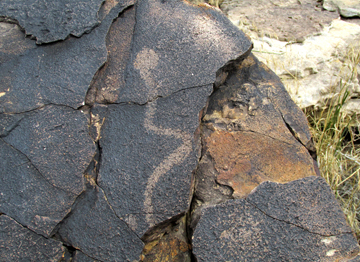 A favorite discovery of the day was this petroglyph rattlesnake.
A favorite discovery of the day was this petroglyph rattlesnake.
Unfortunately, no actual live rattlers were sighted. I say “unfortunately” because I insist that a rattlesnake sighting proves you’re having an adventure. ;>
Here’s a primer on prehistoric southeastern Colorado:
- Throughout prehistoric times, multiple cultures (groups of people) competed for resources (water, plants, and animals) in southeastern Colorado.
- Approximately 1,000 years ago, during what is now called the Diversification Period, agriculture was just getting a foothold in southeastern Colorado. Some cultures were sedentary farmers who stayed year-round. They constructed permanent dwellings in hut-like structures and rock shelters (“caves”) in the rugged outcroppings and ridges. An example is the Apishapa Culture, named after the Apishapa River in southeastern Colorado.
- Other cultures – hunter-gatherers and cross-country traders – moved through the area and often raided the farming communities. They did not construct permanent dwellings, and they made camp in the wide-open valleys. An example is the Barnes Culture, named after an archaeologist who surveyed and excavated these sites.
- Most of the rock art (petroglyphs and pictographs), dwellings, and artifacts we found dated to the Diversification Period, which was about 500 to 900 years ago (approximately 1100 to 1500 AD).
Do you know…
- What is the difference between a petroglyph and a pictograph? Petroglyphs are pecked into the stone (as the rattlesnake rock art image above). Pictographs are painted on stone with long-lasting pigments.
- What do you do when you find a historic or prehistoric artifact? You can carefully pick it up, look at it, and take a picture – then you must put it back down. You never, ever keep it. This is ethical and responsible. And it’s the law.
- Why did I need to receive permission from Fort Carson to publish the following images? Because we must be careful not to divulge the location of ancient sites and artifacts. In fact, I was asked not to share the image of a certain pictograph, because it is considered sacred to several American Indian tribes.
All photos by Patrice Rhoades-Baum except the image of Patrice (on the lookout for more rock art!), taken by Michael Baum.
High-altitude adventures in Rocky Mountain National Park
Mike and I celebrated his birthday by spending a few days in Rocky Mountain National Park – a gem in the National Park System. We should not have been surprised by the crowds (but we were) – after all, it was the middle of July on the 100th anniversary of the National Park System!
After negotiating parking and shuttle logistics to access trailheads, we marched up to the Alpine Life Zone at an elevation of about 11,500 feet. Here, at timberline, wildflowers bob in the cool breeze, streams of icy water glitter in the bright sun, and clouds scuttle across the deep-blue sky, casting shadows on rugged mountain peaks.
No crowds up here – just a few other adventurers from around the world, treasuring every facet of this sparkling gem.
Here are a few of my favorite photos. Enjoy!
(All photos by Patrice Rhoades-Baum, unless otherwise noted.)
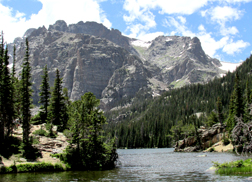
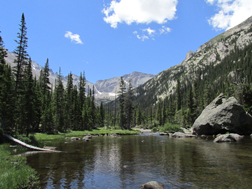
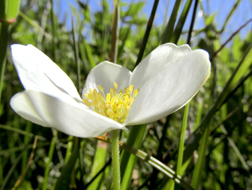

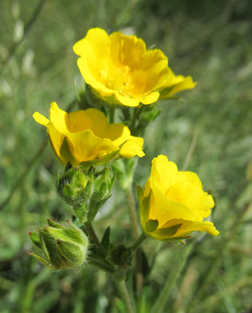
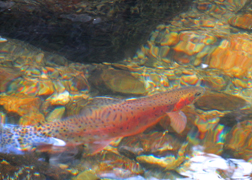
Native to Rocky Mountain National Park, this greenback cutthrout trout is federally listed as endangered. I did not enhance the colors of this guy – he swam into the sunlight and flashed brilliant red!
How to write marketing and website content that is “visual” and memorable
Write marketing and website content that is visual (something the reader can picture) to ensure your message is clear and memorable.
Early in my career, an experienced writer advised me to write copy that enables readers to visualize a picture. I’ve boiled it down to this phrase:
“If they can’t SEE it, they won’t get it.”
In other words, if your readers cannot form a picture in their mind:
- They might gloss over your words.
- They might not fully comprehend the meaning.
- They might not remember your message.
How do you write marketing and website content that is visual and memorable?
Seek to use as much visual language in your writing as possible, particularly in examples, similes, and metaphors – and by using powerful verbs. Try to make your content tangible, almost “touchable.” If you close your eyes, can you see a picture?
Even if you’re writing about a topic that is fairly abstract, conceptual, or technological, you can still strive to make a point with visual words and ideas.
EXAMPLE #1
This copy is for an imaginary speaker who leads workshops to improve team communication and productivity.
Not visual:
“Poor communication in a team contributes to rework, missed deadlines, and conflict. Enhanced communication among team members directly results in enhanced productivity.”
Notice how you gloss over the message?
More visual:
“Poor communication in a team is like tossing a wrench into the works, which leads to mishaps and general mayhem! The results are reworked projects, missed deadlines, and conflict. On the other hand, clear and consistent communication leads to a highly productive team that runs like a well-oiled machine.”
If you close your eyes, can you see a picture?
EXAMPLE #2
Not visual:
“Many personality tests given to teams offer confusing results and advice. This workshop presents a new personality test that identifies key strengths to show how each person is an asset to the team.”
More visual:
“Many personality tests given to teams offer murky results with nebulous advice. This workshop presents a new personality test that shines a spotlight on key strengths, illuminating how each person is an asset to the team.”
2-MINUTE CHALLENGE
It’s YOUR turn. Take 2 minutes to complete this quick exercise. Rewrite the first sentence to make it more visual. Post your sentence on this blog – I’d love to read your idea!
Not visual:
“Personality conflicts in the workplace are damaging and counterproductive – and distract from strategic projects. In this workshop, your team will learn 5 steps to resolve personality conflicts.”
“________________________________________________________
_________________________________________________________
_________________________________________________________”
(See the bottom of this blog post for my solution.)
Some final advice …
When you write marketing and website content, don’t use similes and metaphors ad nauseam. Also, avoid mixed metaphors. Here’s an example: “On our cruise, we went overboard on the buffet. To work off the extra calories, we joined every exercise class and sweated like horses.”
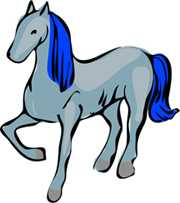
Here’s my solution for the EXERCISE:
“Personality conflicts in the workplace can crush team spirit, sabotage productivity, and overthrow strategic projects. In this workshop, your team will learn 5 steps to resolve personality conflicts.”
~~~~~~~~~
Coming up next: How to edit marketing and website copy for visual appeal and to make it more readable
I’m honored to receive NSA/Colorado’s “Sabah Award”
![]()
Look what happens when you pull together a group of talented people with a vision…
Add inspiration. Toss in a hefty serving of dedication. Then stir it up for about 30 years!
You get NSA/Colorado – one of the most robust chapters in the National Speakers Association. (Actually, we think we’re the BEST chapter!)
More than 30 years ago, Joe and Judy Sabah formed the Colorado Chapter of the National Speakers Association. (Click HERE to learn more about the chapter’s history.)
During the May 6 end-of-year celebration, I was honored to receive the “Sabah Award” for serving NSA/Colorado – a vibrant group of can-do entrepreneurs.
Here’s a big “thank you” to my fellow members serving on the Board of Directors, everyone who steps forward as a volunteer, and to all our members.
Let’s stir things up for another 30 years! :>
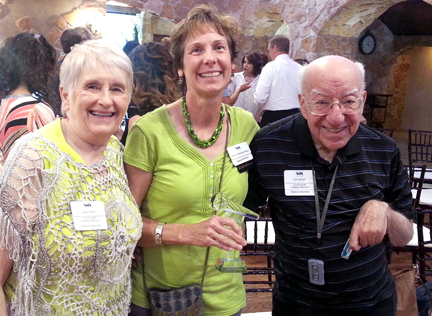
Patrice Rhoades-Baum is the 2016 recipient of the NSA/Colorado “Sabah Award,” pictured here with Judy Sabah & Joe Sabah, founders of the Colorado Chapter of the National Speakers Association.
Seeking the “Zookeeper”
Deep in the rugged canyons of southeastern Colorado, hidden between giant boulders and a jagged ledge, is “Zookeeper.”
About 1,000 years ago, a primitive artist (or artists) pecked a stunning mural into a golden sandstone wall. Known as the Zookeeper Site, this rock art panel consists of one mysterious human figure surrounded by 47 wild animals. Is the mystery man a shaman? Or a hunter? Does this petroglyph panel celebrate a successful hunt? Or express hope for future successful hunts?
Here’s what my friend Lawrence L. Loendorf says about the “Zookeeper” figure in his book Thunder and Herds: Rock Art of the High Plains:
“Shown in full-frontal view, the figure has an elongated, ovoid body to which an inverted set of U-shaped legs is attached. Its straight arms project away from the body, and each ends in four disproportionately large, splayed fingers. Attached to the anthropomorphic figure’s right hand is a set of grid-like crossed lines that are larger than the figure itself. The object’s frayed ends suggest it might be a net or snare – or some sort of object of power.”
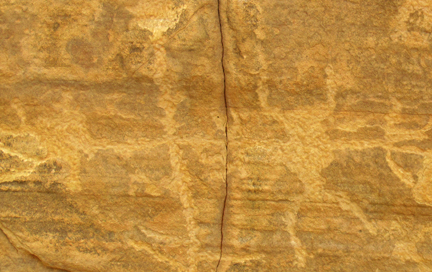
This is “Zookeeper” – the human figure (anthropomorph) that is central to The Zookeeper rock art panel.
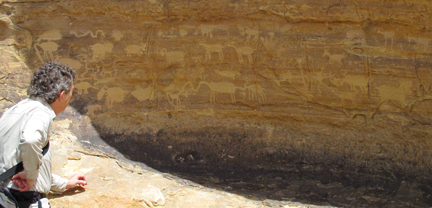
Michael Baum admires The Zookeeper petroglyph panel. Look closely at the right portion of this mural to find the “Zookeeper” figure.
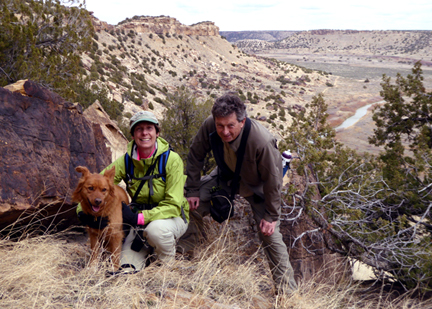
Patrice Rhoades-Baum, Michael Baum and Jake enjoy an adventure in southeastern Colorado (photo by Met Innmon).
Here are details of The Zookeeper petroglyph panel. (Unless otherwise noted, all photos by Patrice Rhoades-Baum)
